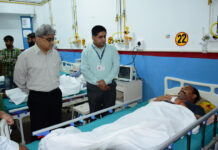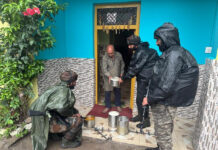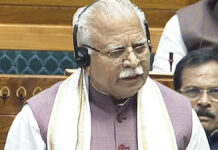Jammu: Udhampur-Srinagar-Baramulla railway line, one of the most remarkable projects of the Indian Government, once completed, will be revolutionary for the Union Territory of Jammu and Kashmir as it will turnaround the economic landscape here.
The railway line will not only give the all-weather connectivity to Kashmir valley but also substantially reduce the transportation costs and will form the backbone of transport of J&K.
The logistics of the track faced many natural challenges as it had to be constructed through major earthquake zone, battling extreme temperatures and hilly terrains. Though the sections from Jammu to Katra and Banihal to Baramulla have been built and are operational, the track from Katra to Banihal is yet to be completed. Moreover, the extension of the railway line up to Kupwara has also been approved.
Tracing back into the annals of history, the first railway track in the erstwhile state was laid in 1897 from Sialkot (Pakistan) to Jammu by the then colonial government. In 1947, with the partition of India, the Jammu-Sialkot line was closed since Sialkot went to Pakistan. As a result, the entire state of Jammu-Kashmir was disconnected from the Indian rail network and Pathankot in the Indian state of Punjab remained the nearest railhead.
Subsequently, In 1975, a rail link was established between Pathankot and Jammu and a renovated Jammu Tawi railway station was opened. It remained at the northern end of the railway line for the next 30 years until the Jammu to Udhampur line was opened in 2005.
The Jammu-Udhampur stretch has 20 tunnels, the longest tunnel is 2.5km long while the highest bridge measures 77m. Sensing the need to connect Kashmir Valley with the northern railway grid, the Government of India declared the Jammu-Baramulla railway line a national project in 2002.



























